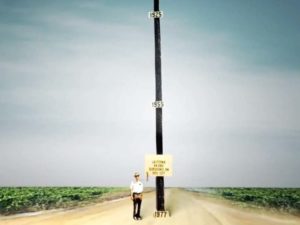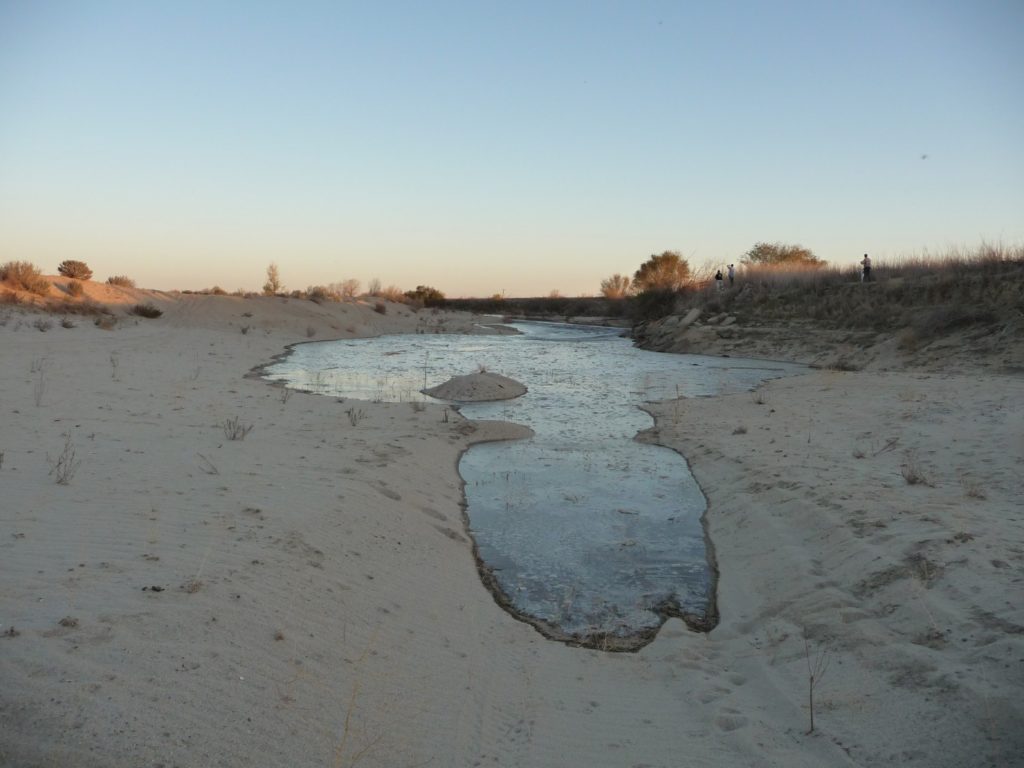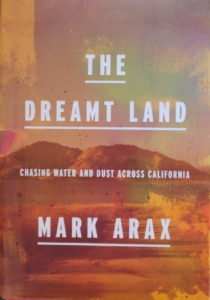
Among the more persistent myths about water in the San Joaquin Valley, none is more durable than the canard that water shortages and land subsidence have been caused by, “an innumerable myriad of Endangered Species Act-related laws, mandates, opinions, rulings and settlements.” This latest addition to the catalogue of misinformation comes from Kristi Diener, in an OP/ED for the Modesto and Fresno Bee newspapers.
Diener, like everyone else who attempts to blame water shortages and subsidence on a “regulatory drought” runs into a logical cul-de-sac when she has to admit that “subsidence did not begin in 2014’s drought. It was an issue at least a century before.”
But if, as Diener says, environmental regulations are just a little over “two-and-a-half decades” in effect, what could have caused subsidence prior to the punitive effects of regulation?
The answer is simple: Overdrafting groundwater caused the subsidence. Who overdrafted the groundwater? Farmers and ranchers. Nothing complex here, but apologists for overuse of public resources really don’t like simple and obvious answers— that’s why they’re always trying to find ways around them.

Diener rightly argues that using surface water is far preferable to pumping groundwater, but wrongly concludes that reductions in surface water allocations for Valley farmers have left farmers with no choice but to pump groundwater. Fact is, farmers in the southern San Joaquin Valley have been overdrafting groundwater since they drained Tulare Lake, at one time the largest freshwater lake west of the Mississippi—they’ve been overdrafting groundwater since they used up the Kern and San Joaquin Rivers decades ago.
Diener writes that reduced allocations have been due to regulatory barriers without pointing out the allocations to farmers from the Central Valley Project and State Water project are based on contractual rights.
Contractual rights, also known as, “paper water,” are distinguished from “appropriative rights,” which are rights bestowed by the state decades back in the 20th century. Appropriative rights, most often designated as pre- or post-1914, carry far more legal authority than contractual rights because the contractual rights specify that allocations are based on yearly abundance and the state or federal government’s discretion.
Anyone with even a cursory knowledge of the history of irrigated agriculture in the San Joaquin Valley is familiar with the iconic photograph of USGS scientist Joe Poland showing the degree of land subsidence near Mendota from 1925 to 1977, well before effects from the Endangered Species Act could have affected water use in the Valley.
Diener claims that without water from northern California, farmers have been “forced” to pump groundwater. Fact is, they were “forced” to pump groundwater well before they started begging state and federal governments for even more water from up north, though “forced” is hardly an appropriate term when discussing the calculated risks all businesspeople must make before investing time and money.
Diverting water from the Central Valley’s major rivers, especially the Sacramento and San Joaquin, has wreaked environmental destruction in the San Joaquin Delta, decimated salmon runs, negatively impacted California fisheries, and had devastating effects on wetlands and wildlife throughout the Valley. In many places, intensive irrigation has also poisoned the soil, most notably in the scandalous case of the Kesterson National Wildlife Refuge.
 According to Mark Arax in The Dreamt Land, farmers have increased irrigated acreage during every drought since the 1920s. Even during the drought of 2014-15, agribusinesses like Kern County’s Paramount Farms added over 70,000 acres of farmland to their already extensive holdings of pistachios, almonds and walnuts.
According to Mark Arax in The Dreamt Land, farmers have increased irrigated acreage during every drought since the 1920s. Even during the drought of 2014-15, agribusinesses like Kern County’s Paramount Farms added over 70,000 acres of farmland to their already extensive holdings of pistachios, almonds and walnuts.
Adding acres of farmland and then begging the government for a water fix isn’t much different from speculating on a widget boom and then asking the government to buy up your overproduction. No one has ever forced farmers to pump groundwater. Instead, they’ve kept adding irrigated acreage whenever they could because they figured they could count on government bailing them out.
It’s almost as though they think we’re a socialist economy.

I grew up on a dairy in Denair – Hickman Road. Other than a few exceptions, everything east of us was dry farmed (hence more doves and pheasant than one could count). Now, however, those thousands of acres are all under irrigation. Granted it’s drip irrigation but still, it’s a massive amount of water that has to be pumped. After all, one can’t flood irrigate rolling hills.
When my parents bought the dairy in ’57 our well casing was at 60′ and water at 18′ In the late eighties dad had to have a new well drilled. If I recall correctly, the casing was at 240′ and water at 160′
The desire for more and more profit is taking a toll.
The close relationship between surface water deliveries and groundwater sutainability is well established and important for our community to understand. Farmers statewide have increased groundwater use in drought years and in years where otherwise abundant water has flown out of the delta to the ocean.
Our local groundwater is threatened by an extreme environmentalist effort to flush our surface water out to the ocean. Kristi Diener is protecting central valley health and jobs. She is truly a Valley Citicen.
Where is our Congressman Josh Harder on this?
Our groundwater in Stanislaus County is threatened by sales from Oakdale Irrigation District to Westlands Water District. As I recall, Mr. Duarte, you support those sales.
It is the moronic state.water board proposal that is going to threaten groundwater.
Typical nonsense. If the idiotiic State Water Resourcse Control Board follow proposal ever became law, groundwater pumping will increase. Newsom wisely is vetoing SB1, an idiotic bill passed by clueless Sacramento democrats. Most valley democrats rightly opposed such stupidity
West Sider: If the state enforces the Sustainable Groundwater Management Act (SGMA), there will be a steep decline in groundwater extraction throughout the San Joaquin Valley. While it’s true the state rarely follows through on environmental protection, in this case the situation is so dire the state may have no choice. The last viable aquifer in the San Joaquin Valley is in the eastern foothills of Stanislaus County, and it is draining rapidly. The days of pumping huge volumes of groundwater are coming to an end in any case, as the greater the depths pumped the greater the costs. But if SGMA does kick in, there will be no choice but to fallow hundreds of thousands of acres.
If? SGMA is already law. Has been for five years. Groundwater Sustainability Plans in high priority basins must be completed by the end of the year. The onset of surface water deliveries from the Central Valley Project and the State Water Project arrested subsidence of the past. Without adequate reliable amounts from the projects as they were built and designed to provide, rainfall alone will not be enough to prevent an environmental catastrophe. People and food producers exist in the valley because of our water projects’ magnificent ability to move water around. California’s civilization was also developed because of the CVP and the SWP. The system worked fine until the radical environmentalists used the courts to send 50% of California’s water into the sea annually. And guess what? There is nothing to show for this gross waste. Endangered fish have not recovered. The more water they put into the ocean, the more farmers will turn to pumping. It’s pretty simple. Kristi’s right, it’s time to give some water back to farmers.
Our well and surrounding well levels are in good shape because we have ample surface water. If the state board plan passes as is with no drought mitigation, ground water pumping will rapidly increase in dry years. The state board plan relies on increased groundwater pumping to.minimize the impact its plan would have on local growers. Of course they ignore sigma in their evaluation
8,741,637,362,100 gallons of fresh water from this season alone has flowed out into the Pacific Ocean. It was not used to replenish groundwater or alleviate subsidence, and it could have been. It is now unusable by anyone. Farmers absolutely could have put this water into the ground if wasn’t for the “innumerable myriad of Endangered Species Act-related laws, mandates, opinions, rulings and settlements.” Kristi Diener nailed it.
If you have not read the MID story, “The Greening of Paradise Valley”, you are missing the horrible history since the 1880’s thru today. You are missing a huge lesson in stupidity, waste, greed and just plain theft, of water.
Nice work, Eric.
Ironic that Central Valley farming sucks up all the water for irrigation, which then runs off with all the chemicals into the waterways and ruins what’s left.. And darn it — none of this would have happened if we didn’t try to protect the little bit of remaining natural habitat!
If this Valley wasn’t so less-than-average, people wouldn’t stand for it. .
You failed to me iron in the article how urban sprawl has affected our water supply. If you ask me housing developers, not farmers, are the biggest threat to our environment.